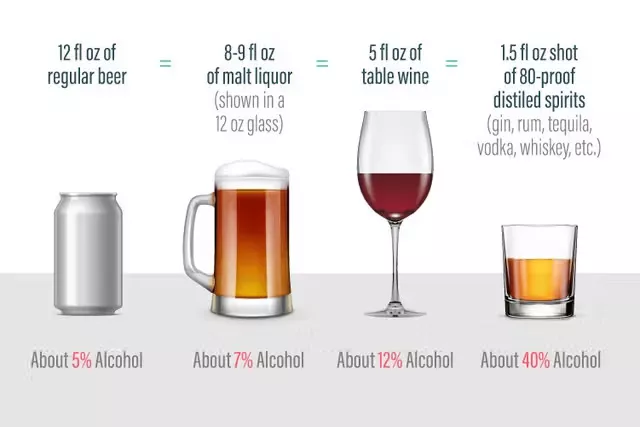![It is always advisable to drink in moderation [Medical News Today] It is always advisable to drink in moderation [Medical News Today]](https://static.netnaija.com/i/g8NBBzvVNDR.webp)
You have probably spent the night drinking or you had a few bottles and you are wondering how long before the alcohol leaves your body system.
When you consume alcohol, your body begins to metabolise it immediately. The primary organ responsible for alcohol metabolism is the liver. The liver breaks down alcohol using enzymes, primarily alcohol dehydrogenase (ADH) and aldehyde dehydrogenase (ALDH).
These enzymes convert alcohol into acetaldehyde and then into acetic acid, which is eventually eliminated from the body as carbon dioxide and water.
How long does it take for alcohol to leave your system?
Different factors affect how long alcohol remains in your body and some of them include;
Rate of consumption
The speed at which you consume alcohol plays a significant role. Drinking alcohol quickly leads to a rapid increase in blood alcohol concentration (BAC), putting more strain on your liver to metabolise it.
Gender
Generally, women metabolise alcohol slower than men. This is due to differences in body composition, enzyme levels, and hormonal factors.
Body weight and composition
People who have higher body weight tend to metabolise alcohol faster than those with lower body weight. Muscle mass also plays a role, as muscles contain more water than fat, diluting alcohol in the body.
Food intake
Consuming food before or while drinking slows down alcohol absorption, leading to a slower increase in BAC. This gives the body more time to metabolise alcohol.
Liver health
A healthy liver metabolises alcohol more efficiently than a compromised liver. This means, you will dispel alcohol faster if you have a healthy liver. However, chronic alcohol consumption can damage the liver, leading to slower metabolism and longer clearance times.
Genetics
Genetic variations can influence alcohol metabolism. Some people have genetic traits that make them more sensitive to alcohol or affect how quickly they metabolise it.
With all of the above in mind, the amount of time alcohol will remain in your blood system will be different for each person.
However, a general guideline is that the body metabolises alcohol at a rate of about 0.015 grams per deciliter (g/dL) of blood alcohol concentration per hour. This means that it takes approximately:
– *1 standard drink*: About 1 hour to metabolise.
– *2 standard drinks*: About 2 hours to metabolise.
– *3 standard drinks*: About 3 hours to metabolise.
P.S. One standard drink is equal to one 12-oz beer, 1.5 ounces of liquor (whiskey, vodka, etc.), or a 5-oz glass of wine according to the Alcohol Rehab Guide.

The above only applies to alcohol in the blood. In the urine, alcohol can be detected for up to 3 to 5 days. On your hair follicle, alcohol can be detected for up to 90 days.
Keep in mind that these are estimates, and individual differences can lead to variations in clearance times. It’s also important to note that breathalysers and blood tests can detect alcohol in your system even after you feel sober, as they measure residual alcohol content.
Conclusion
Factors such as rate of consumption, gender, body weight, liver health, and genetics all play a role in alcohol metabolism and clearance times. It is always advisable to drink in moderation, know your limits, and never drive under the influence of alcohol.

![It is always advisable to drink in moderation [Medical News Today]](https://brainboxnews.com/storage/2024/03/How-long-does-it-take-for-alcohol-to-leave-your.webp.webp)





